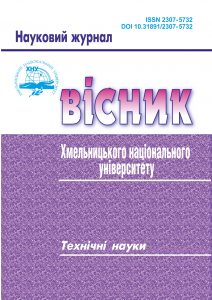PREDICTION METHOD FOR PUBLIC ROAD POLLUTION BASED ON DEEP ACTIVE LEARNING APPROACH USING IMAGE ANALYSIS
DOI:
https://doi.org/10.31891/2307-5732-2023-329-6-321-326Keywords:
road pollution, deep active learning, forecasting, neural networks, transportAbstract
The study proposes a method of predicting road pollution based on the approach of deep active learning. The proposed method allows modeling the future dynamics of changes in the level of road surface pollution over time, in contrast to existing approaches, which are mainly focused on the analysis of the current state in real time. The main goal of the work is to improve road pollution control and management systems by providing accurate forecasting of the level of pollution based on input data. This will allow timely measures to reduce pollution and improve the quality of road infrastructure.
The basis of the proposed method is the use of a recurrent LSTM neural network. In addition, the technique of increasing the dimensionality of the data by introducing lags (time-shifted variables) is used to more effectively take into account historical dependencies when building a predictive model.
In addition, the work improved the procedure for measuring the current level of pollution based on a combination of neural networks CNN (for analyzing road surface images) and LSTM (for modeling the temporal dynamics of changes).
The proposed comprehensive approach makes it possible to determine the current state and predict the future level of road infrastructure pollution with high accuracy. The developed method can be applied in practice for planning cleaning works, optimizing road maintenance schedules and other purposes in the field of transport infrastructure management.
The obtained results allow us to conclude that lengthening the process of learning the model, i.e. increasing the number of epochs through multiple analysis and adjusting the weight coefficients of the neural network, has a positive effect on the accuracy of predictive calculations of the level of pollution for a given future period. Thus, it can be argued that the proposed approach is effective for solving the given task.
The research also confirmed the effectiveness of the proposed method based on deep active learning for solving the task of predicting road pollution.

